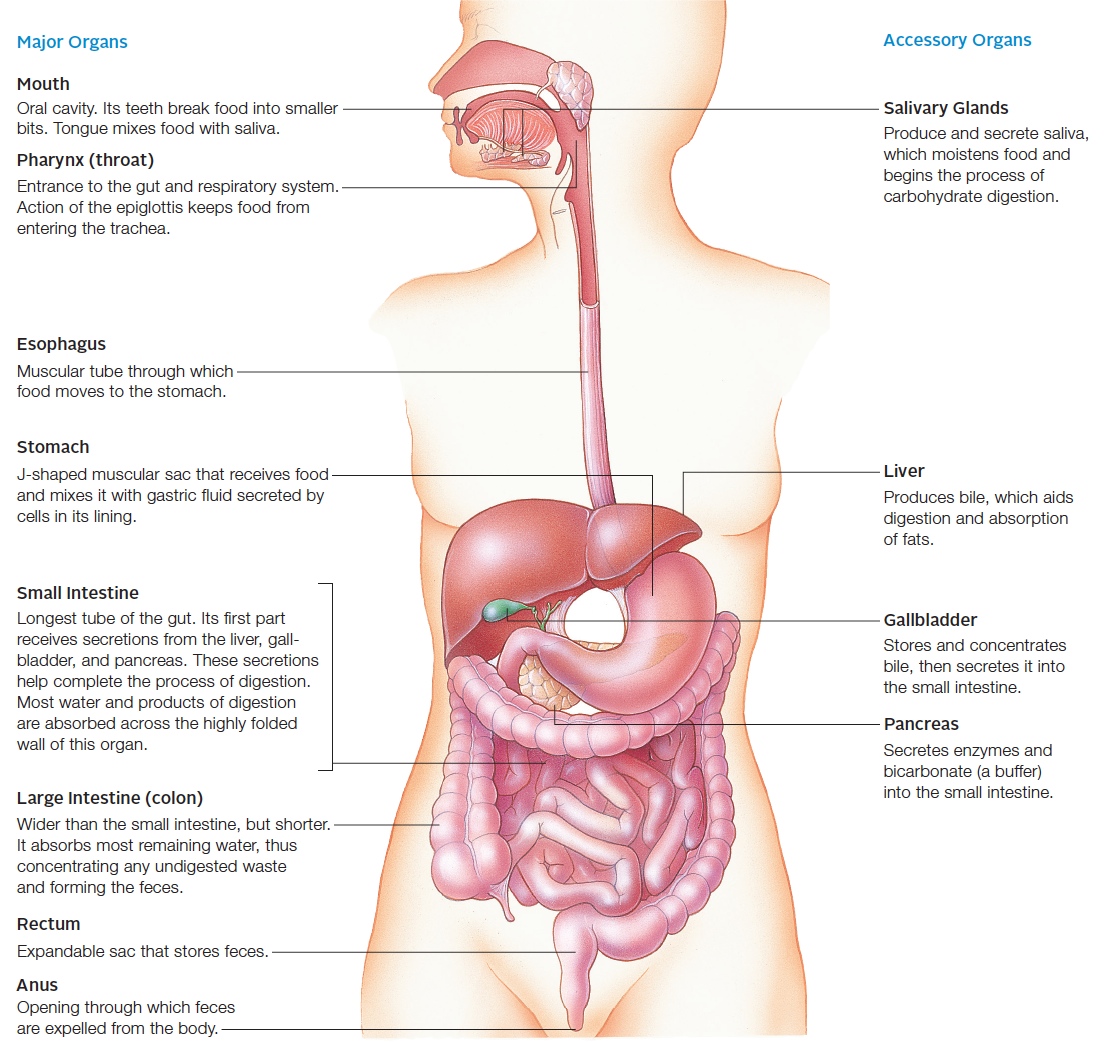 |
| Previous Image | Next Image |
| Description: Pharynx (throat) Mouth Major Organs Oral cavity. Its teeth break food into smaller bits. Tongue mixes food with saliva. Pharynx (throat) Entrance to the gut and respiratory system. Action of the epiglottis keeps food from entering the trachea. Esophagus Muscular tube through which food moves to the stomach. Stomach J-shaped muscular sac that receives food and mixes it with gastric fluid secreted by cells in its lining. Small Intestine Longest tube of the gut. Its first part receives secretions from the liver, gallbladder, and pancreas. These secretions help complete the process of digestion. Most water and products of digestion are absorbed across the highly folded wall of this organ. Large Intestine (colon) Wider than the small intestine, but shorter. It absorbs most remaining water, thus concentrating any undigested waste and forming the feces. Rectum Expandable sac that stores feces. Anus Opening through which feces are expelled from the body. Accessory Organs Salivary Glands Produce and secrete saliva, which moistens food and begins the process of carbohydrate digestion. Liver Produces bile, which aids digestion and absorption of fats. Gallbladder Stores and concentrates bile, then secretes it into the small intestine. Pancreas Secretes enzymes and bicarbonate (a buffer) into the small intestine. Picture Stats: Views: 227 Filesize: 388.39kB Height: 1043 Width: 1112 Source: https://biology-forums.com/index.php?action=gallery;sa=view;id=47450 |
